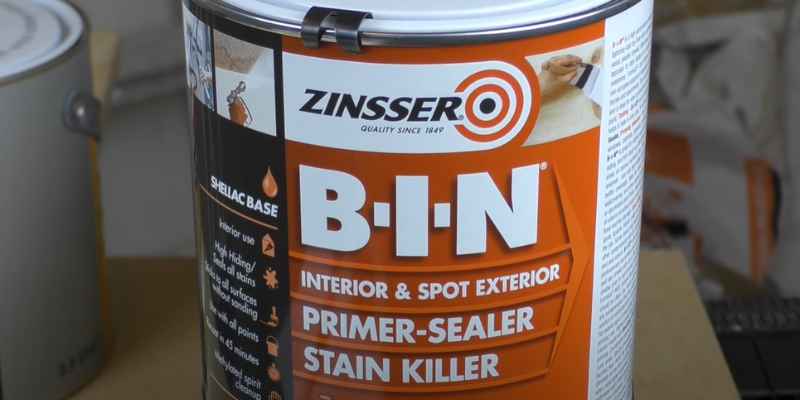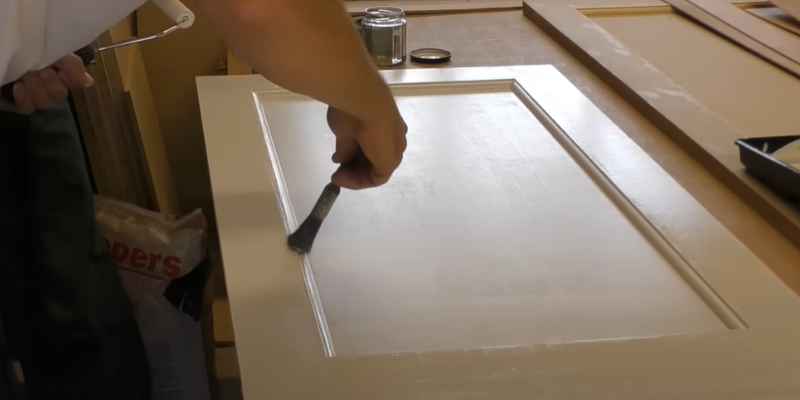Use a high-quality acrylic primer for MDF. It provides excellent adhesion and a smooth finish.
Medium-density fiberboard (MDF) is a versatile and cost-effective material widely used in furniture and cabinetry. Priming MDF is essential to ensure a durable and professional finish. Acrylic primers are ideal due to their superior bonding capabilities and smooth application. They seal the porous surface of MDF, preventing moisture absorption and swelling.
This type of primer also provides a solid base for paint, ensuring vibrant and long-lasting color. Properly primed MDF surfaces are easier to sand and result in a flawless finish. Always choose a high-quality acrylic primer to achieve the best results for your MDF projects.
Introduction To Mdf And Finishing Necessities
MDF is a type of engineered wood. It stands for Medium-Density Fiberboard. MDF is made from wood fibers and resin. These materials are pressed together. MDF has a smooth surface. It is easy to cut and shape. MDF is cheaper than solid wood. It is used for many projects.
A good primer is very important for MDF. It helps the paint stick better. Primer prevents the MDF from absorbing too much paint. This saves paint and makes the finish smooth. Primer also seals the MDF. This keeps moisture out. A sealed MDF lasts longer.

Types Of Primers Suitable For Mdf
Oil-based primers are great for sealing MDF. They block stains and provide a smooth finish. These primers dry hard and are very durable. You can use them under any paint type.
Water-based primers are easy to clean and have low odor. They dry quickly and are eco-friendly. These primers work well on MDF and are easy to apply. They are also less toxic than oil-based primers.
Shellac-based primers are excellent for tough stains. They dry quickly and provide a strong seal. These primers are also good for blocking odors. They work well on MDF and give a smooth finish.
How To Choose The Right Primer
MDF has a smooth surface. This makes it easy to paint. Choose a primer that can stick well. Some primers are made just for MDF. Look for these when shopping. Sanding the surface can help the primer stick better. Always make sure the surface is clean.
Think about where the MDF will be used. If it will be in a kitchen, use a moisture-resistant primer. For furniture, a stain-blocking primer is best. This helps the paint look better. High-traffic areas need a strong primer. Choose wisely based on the use.
Temperature and humidity can affect the primer. In a damp place, use a moisture-resistant primer. Heat can make some primers dry too fast. Cold can make them dry too slow. Read the label for best results. Always work in a well-ventilated area.
Preparation Steps Before Priming Mdf
Sanding makes the MDF smooth and ready for primer. Use fine-grit sandpaper for best results. Sand the surface gently to avoid damage. Check for any rough spots and sand them carefully. Always sand in the direction of the grain.
After sanding, clean the MDF surface. Use a damp cloth to remove dust. Make sure the surface is completely clean before priming. Dust can affect the primer’s adhesion. Allow the surface to dry fully.
Edges of MDF can be rough. Use edge sealers to smooth them. Fill any imperfections with wood filler. Sand the filled areas once they are dry. This makes the surface even and ready for priming.
Application Techniques For A Smooth Finish
Using a brush gives you more control. It is great for small areas. Spray methods are faster for large surfaces. They provide a smooth finish. Brush strokes can leave marks. Spraying avoids this problem.
Multiple coats are essential for durability. The first coat acts as a base. Second and third coats add strength. Each coat should be thin. Thick coats may crack.
Drying times vary with primers. Read the label for instructions. Good ventilation speeds up drying. Keep the area dust-free. Dust can ruin the finish. Temperature and humidity also affect drying times. Warmer conditions are better.
Common Mistakes To Avoid When Priming Mdf
Sanding is very important for MDF. Skipping this step makes the surface rough. Paint will not stick well to rough MDF. Always sand before priming MDF.
Thick coats of primer do not dry well. They can cause drips and uneven surfaces. Use thin coats and let each coat dry. Thin coats make a smooth surface.
Humidity and temperature affect how primer dries. High humidity makes primer dry slowly. Cold temperatures also slow drying. Check the weather before priming MDF.
Top-rated Primers For Mdf Projects
Professional painters love Zinsser B-I-N Shellac-Based Primer. It dries fast and blocks stains. KILZ Premium High-Hide Stain Blocking Primer is another favorite. It seals MDF well and is easy to sand. Rust-Oleum Painter’s Touch Ultra Cover Primer offers great coverage. It is also known for its durability.
For those on a budget, Zinsser Bulls Eye 1-2-3 Primer is a great choice. It provides excellent adhesion and mold resistance. KILZ 2 Multi-Surface Stain Blocking Primer is affordable and versatile. It works well on various surfaces, including MDF. Rust-Oleum Zinsser Cover Stain Primer is cost-effective and reliable. It can be used both indoors and outdoors.
Finalizing Your Mdf Project
Painting over primer makes your MDF look smooth. Use a high-quality paint for the best result. Apply thin coats and let each coat dry. This prevents the paint from dripping. Sand lightly between coats for a perfect finish.
Sealing MDF is important to protect it from moisture. Use a good sealer to cover the edges and surface. This keeps the MDF from swelling or warping. Make sure to seal all sides and edges for full protection.
- Dust regularly to keep the surface clean.
- Wipe with a damp cloth for any spills.
- Use coasters to avoid water rings.
- Check for any damage and repair quickly.
- Keep the MDF away from direct sunlight.
Faqs On Priming Mdf
MDF absorbs moisture quickly. Unprimed MDF swells and gets damaged. This can lead to a rough surface. Priming MDF protects it from moisture. It also makes the paint stick better. Always prime MDF for the best results.
Two coats of primer are ideal for MDF. The first coat seals the surface. The second coat ensures even coverage. Sanding between coats gives a smooth finish. This helps in achieving a perfect look.
Prime MDF in a dust-free area. This ensures a smooth finish. Room temperature is best for priming MDF. Avoid humid conditions. Proper ventilation helps the primer dry faster. Always use a brush or roller for even application.
Conclusion: Ensuring A Flawless Finish
Priming MDF is essential for a smooth, even finish. Choose a high-quality primer designed for MDF. This ensures the best results. Sanding the MDF before priming helps. Use a fine-grit sandpaper for the best outcome. Make sure the surface is clean and dust-free before applying the primer.
Apply the primer in thin, even coats. Allow each coat to dry completely. Lightly sand between coats if needed. This helps achieve a smooth finish. Two coats of primer are usually enough. Always follow the manufacturer’s instructions for the best results.
After priming, you can paint the MDF. Use a high-quality paint for a durable finish. Again, apply in thin, even coats. Allow each coat to dry before adding another. This helps prevent drips and uneven coverage. Your MDF project will look professional and last for years.

Frequently Asked Questions
Do You Need Special Primer For Mdf?
Yes, you need a special primer for MDF. Use a solvent-based or acrylic primer to seal the surface properly.
What Primer Is Good For Mdf?
Use a high-quality, oil-based primer or a shellac-based primer for MDF. These seal the surface effectively, preventing moisture absorption and ensuring a smooth finish.
Do You Need Acrylic Or Water-based Primer For Mdf?
Use acrylic primer for MDF. It seals the surface and provides a smooth base for paint.
Conclusion
Choosing the right primer for MDF ensures a smooth, long-lasting finish. High-quality primers like shellac and oil-based options provide excellent results. Always prepare the MDF surface properly before application. With the right primer and preparation, your MDF projects will look professional and stand the test of time.


